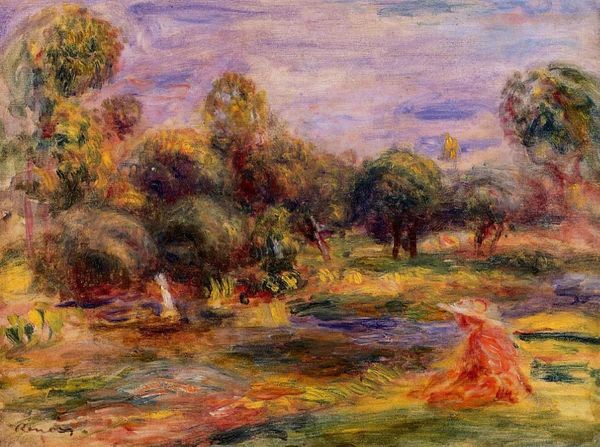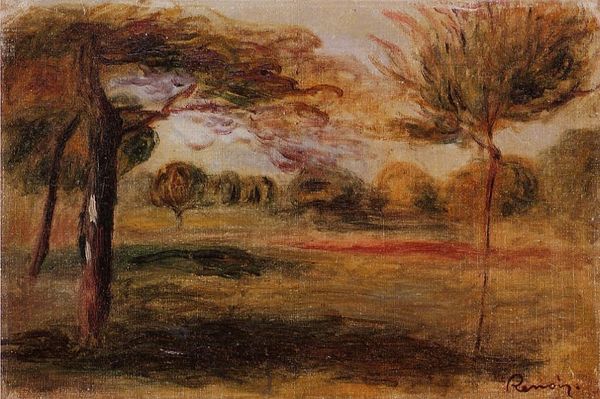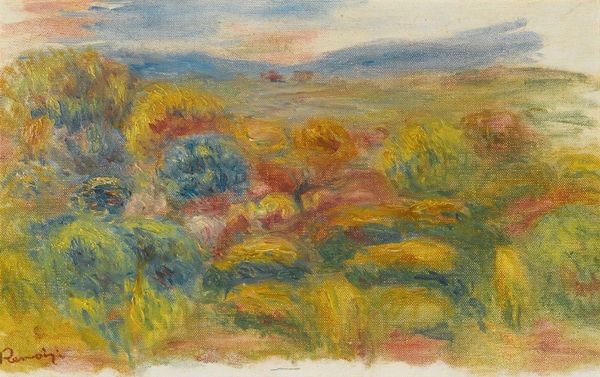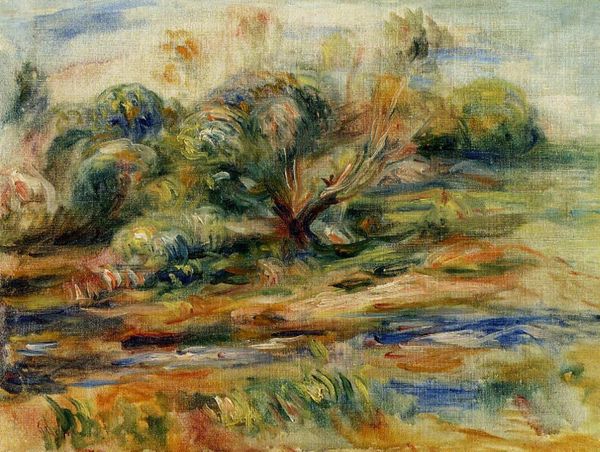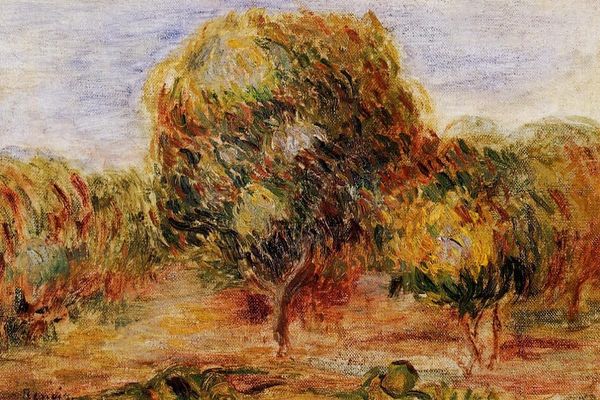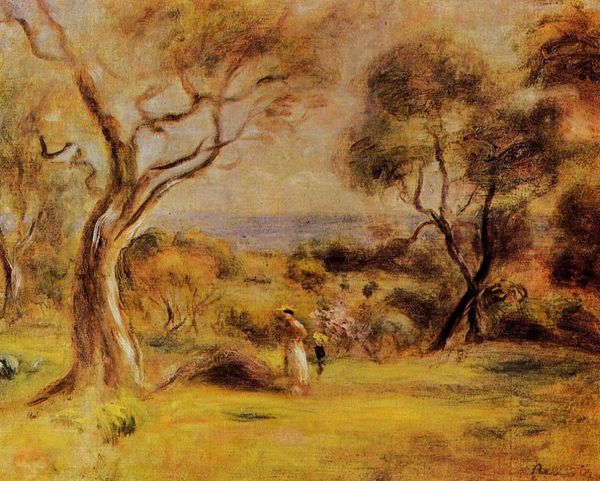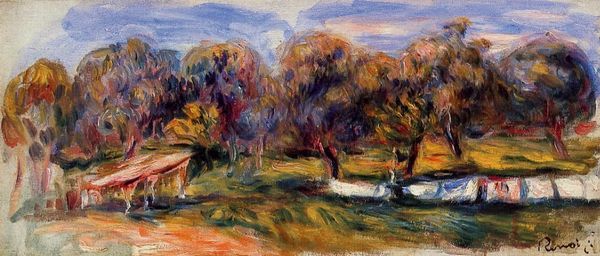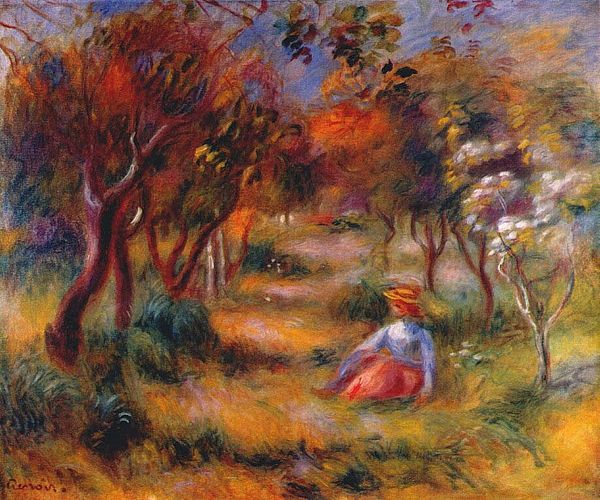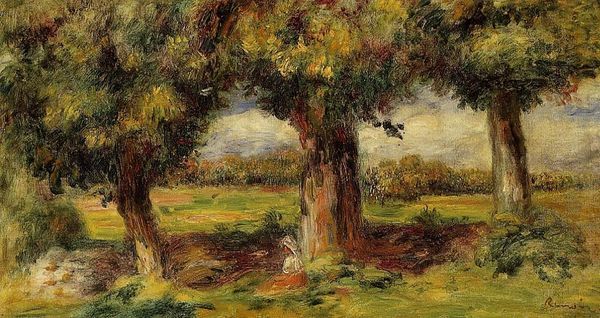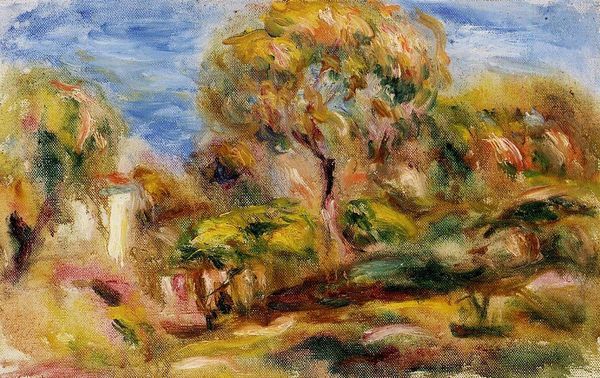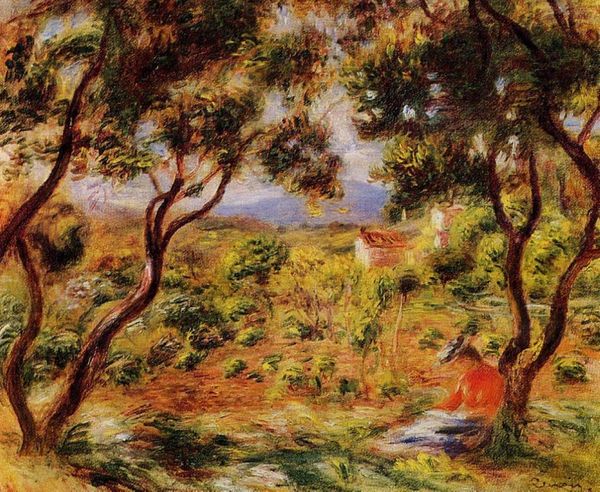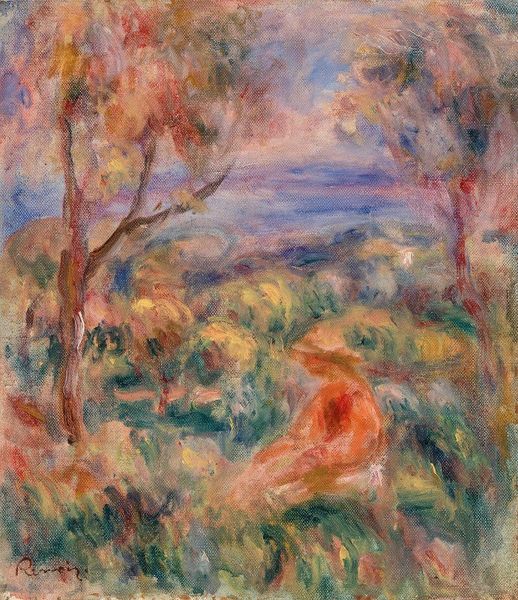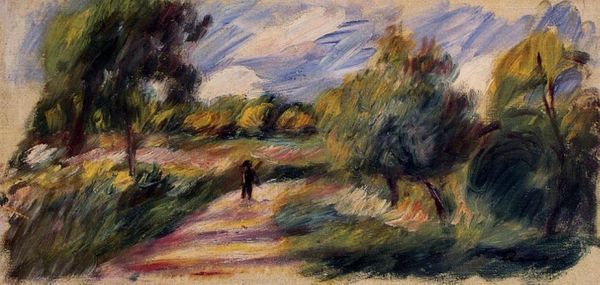
Landscape with Figures at Cagnes 1916
0:00
0:00
pierreaugusterenoir
National Museum of Serbia, Belgrade, Serbia
Copyright: Public domain
Curator: Let's talk about Renoir’s “Landscape with Figures at Cagnes,” painted around 1916, now residing at the National Museum of Serbia. Editor: At first glance, the color palette is absolutely striking; rich and full of earth tones but in an ephemeral sort of way. It feels fleeting, like a captured moment of sunlight through the trees. Curator: Indeed, that aligns with Impressionist tenets. Renoir's later work, especially, often blurred boundaries, prioritizing emotional resonance over rigid representation. We need to examine how figures, gender and labor intersect within his oeuvre at this stage, considering that his focus shifts to idealized, almost timeless scenes that are situated against backdrops that offer quiet reflections. Editor: I’m particularly interested in his use of oil paint. You can practically see the layers, the gestures. It is evident how the brushstrokes build form and texture. His emphasis on the tactile quality of the paint, as the means to constructing this vision, connects deeply with the material realities of artistic creation. Curator: I agree. It challenges this romantic notion of the artist as solely inspired. He used readily available materials from a burgeoning industrial world and the legacy of that shows in art, too. Also, that landscape evokes a sense of escape, which, during World War I, carried significant political weight and was very intentional as it challenged dominant nationalist sentiments. This offered an alternative vision of peaceful co-existence in nature. Editor: It's fascinating how his impressionistic style transforms the land around Cagnes into more than just a setting; it feels actively crafted through the labor of applying paint. It's about shaping an idealized reality that directly challenges wartime grimness. Curator: Exactly! Seeing how this art creates escapism through accessible material offers a view on art’s broader significance within our shared cultural history. Editor: It reminds us that art is rarely divorced from its conditions of production; art shows history, class and means to all exist together on a single plane.
Comments
No comments
Be the first to comment and join the conversation on the ultimate creative platform.
